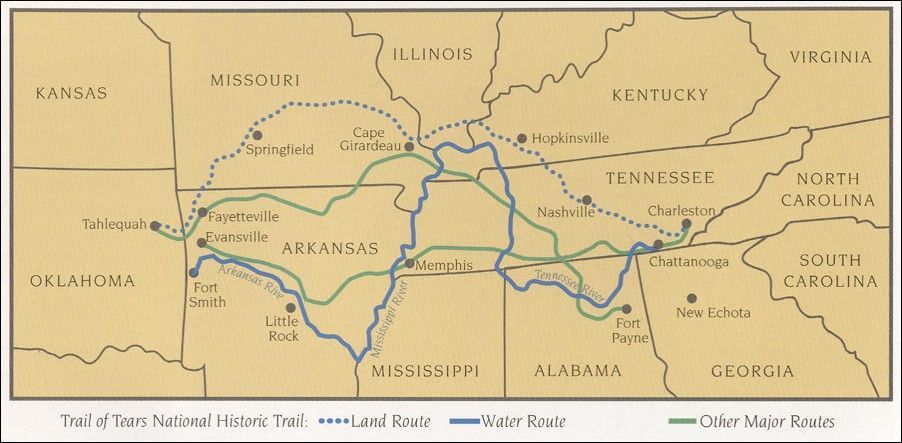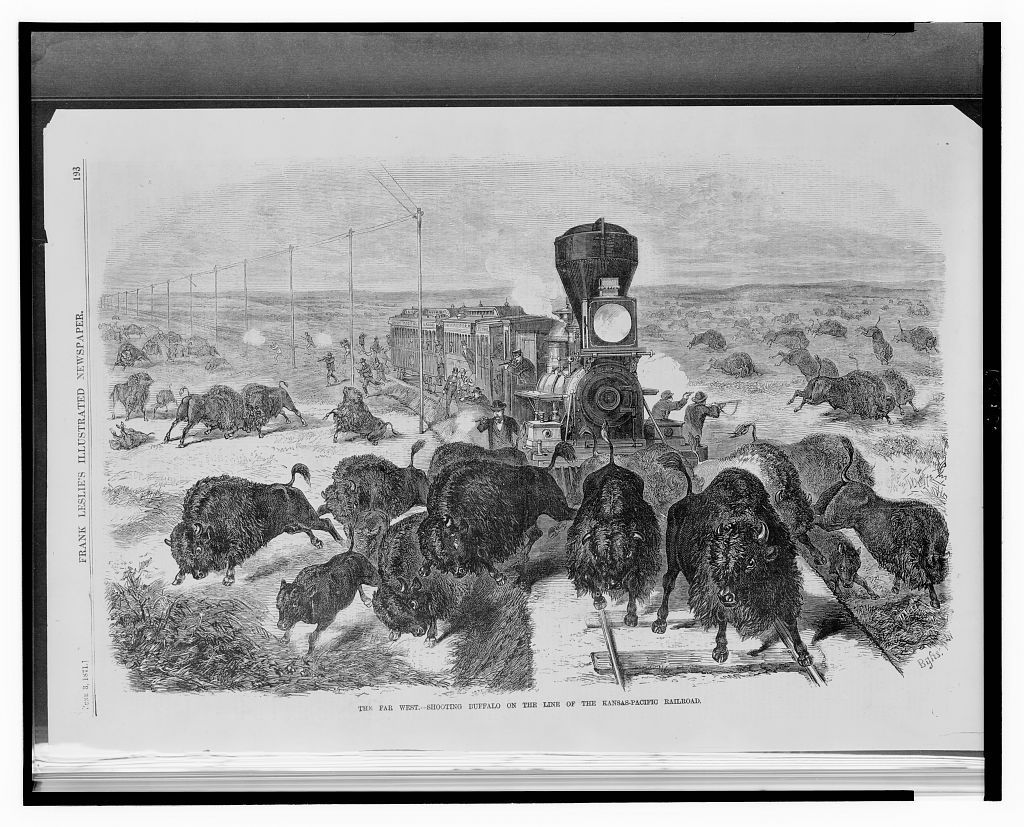Hunger on the Trail of Tears
“Trail of Tears” was the Cherokee name for the fatal journey they were forced to undertake in the 1830’s. Thousands of native people were driven from their homes in America’s Southeast, to areas west of the Mississippi river, where a new, government-sanctioned homeland was awaiting them. The journey took three months, and thousands were left along the trail, having succumbed to cold, hunger and exhaustion.

The Trail of Tears was 5 000 miles long, and an important milestone in the 19th century policy of extermination and assimilation of American native peoples. Forced starvation and controlling food resources played a central part in this policy.
“Food was an important weapon for the European Americans in the conflict with the native population across the “new” continent”, says Dr. Brett Riggs. He is an archaeologist who researches the Cherokee Tribes in the U.S. in the 19th century. “The destruction of crops and food stores was a method that was used to drive the Cherokee in the East to newly allocated areas in the West. And later, when the Europeans too began moving westward, the mass slaughter of bison became a way to rob natives of their livelihood. In this way, the settlers could defeat the native population without going to war”, Dr. Briggs explains.
Discovery Doctrine
Hunger thus played a key role in the extermination policy directed at Native Americans. What justified these policies was the so-called Discovery Doctrine, which gave the European states who “discovered” a new area the right to rule that land.
“The ideological justification was the belief that European, white people were culturally more developed, and thus had a God-given right to subjugate the lands of those considered lesser peoples”, says Øyvind Ravna. He is a lawyer at the University of Tromsø, Norway, specializing in indigenous rights. He says the extermination happened in three different phases.
The first phase was the forced removal from the East to the West. The colonizers from Europe first settled in the Eastern part of the continent. To satisfy their need for arable land, they began forcibly moving native populations westward, to newly allocated areas west of the Mississippi river. “Indian Removal Act” was passed in 1830 and became the legal underpinning of what would come to be known as the Trail of Tears. In the early 1830’s, about 125 000 Native Americans lived in Georgia, Tennessee, Alabama, North Carolina and Florida. After a few years, the number had dropped to almost zero.
The reservations
Throughout the 1840’s, white settlers too began to move west, and when gold was discovered in California, Montana and South Dakota, the pressure on native lands further increased. At this point, the white settlers wanted to retake the lands that had been allocated to the natives only a few years prior. In 1851, the Indian Appropriation Act was passed. The new law would ensure that the tribes in the West were moved into reservations where they could be “protected” from white settlers. It was at this time that the so-called Indian Wars, known from countless films and books, began. The native warriors were superior in many of these wars and skirmishes, due to faster horses and better marksmanship. To subdue the tribes, the American generals developed a new strategy. They soon began to gun down the bison herds that made up the very core of the native’s livelihood on the prairie.
"“The fastest way to force the Indians into permanent settlements and a civilized way of life is to send ten regiments of soldiers out on the prairie with orders to shoot down the bison, until they are too few to sustain the redskins any longer”. "

“The American generals found it easier to kill the bison than wage armed war against the native tribes”, explains Ravna. “It became common for all passengers on the new railway across the prairie to participate in this hunt. Those who did not bring a gun, were handed one from the railroad company. While the train journeyed across the prairie, the passengers leaned out of the windows, gunning down bison on sight.” The result was the near extinction of the bison, while the native population lost their livelihood, and were forced to settle in the reserves.
After the turn of the century, U.S. government policy toward Native Americans entered its third phase: assimilation. In this phase, the government’s aim was to make the native population as similar to European American culture as possible, in language, culture and way of life. “Kill the Indian, save the man” was a well-known slogan of the time, Dr. Briggs tells us. And again, food played a central role. In the reservations, the natives were forced to adopt “white” food culture, which was strange to both their bodies and their culture. In the U.S. today, some descendants of these people are trying to reclaim some of what was lost in this era, Briggs explains. “We are seeing a new “Native food activism” trying to re-establish the traditional food culture that existed on the prairie.” Food is not just important as a means of war, but also as a carrier of tradition and a symbol of independence.
Sources: SNL.no, history.net and Øyvind Ravna; Fra Litttle Bighorn til Standing Rock, Orkana Akademisk (2018)
LISTEN TO HISTORY
USA AND THE NOBEL PEACE PRIZE EXHIBITION 2020
In this year’s Peace Prize exhibition, we want to show how food is being used as a weapon in war and conflict. The renowned Ethiopian photographer Aïda Muluneh was commissioned to create ten pieces, illustrating ten different countries and conflicts where food has been used as a tool for power. The conflict between the native american and the European settlers in the USA is one of the examples.
The picture is titled “Trail of Tears”, after the forced replacement of native americans in the 1830's.
Watch Aïda Muluneh explain more about this photo and the story behind it:
Share:
